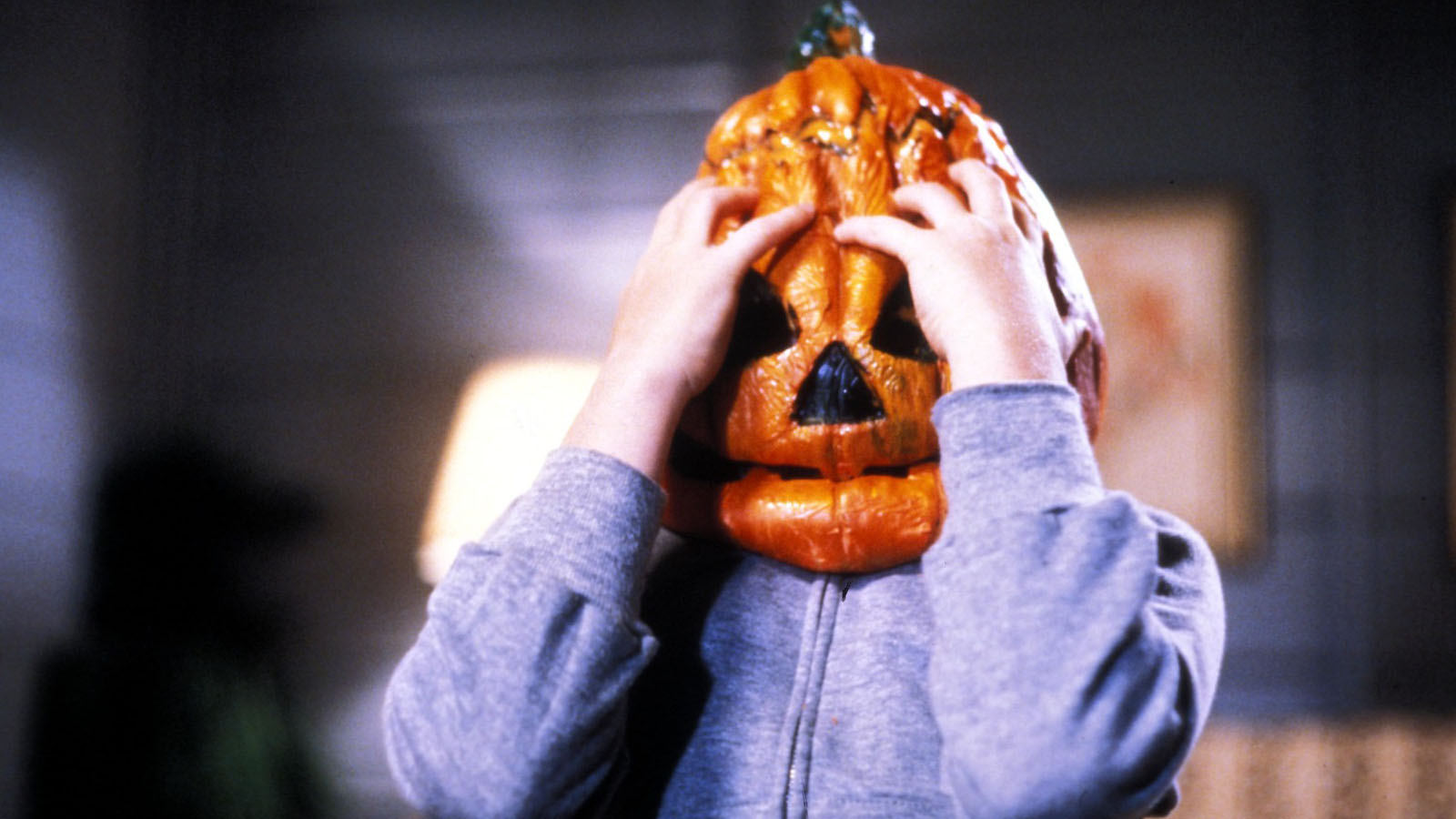
The way horror film series typically work is that the first entry is notable, for whatever reason—it’s a great movie, it’s popular, it infiltrates the news cycle/culture—and then subsequent entries get worse and worse and worse, until there are no more. This has been the standard course dating back to Universal’s Mummy pictures in the 1930s and 1940s and all things Gill-man/Black Lagoon in the 1950s. It’s just how it goes, with rare exceptions. Among the latter, we can cite Friday the 13th, but that’s because the iconic monster didn’t turn up properly attired in his goalie mask until the third entry in the series, and the picture that started it all was more akin to a mystery with campy bloodletting (at camp, no less) than out-and-out horror.
But then there is the frowsy, bastard prince of these exceptions, a movie that slits the throat of any expectations of how horror sequels are supposed to proceed. That would be 1982’s Halloween III: Season of the Witch, which numbers among the most theoretically annoying films I’ve ever seen, but in an addictive way, so that latent-stage annoyance becomes instead a badge of honor, and then a nonentity, leaving behind the best movie in the entire Halloween series. I’ll go further: It’s the one most worth watching again.
I was always struck by how non-autumnal the original Halloween, from 1978, looked. The whole thing seemed vernal to me. I love Halloween the holiday, so if you make that word the title of your movie, chances are I’ll watch it. When John Carpenter’s supposedly classic film comes on TV, I don’t change the channel, but really all that resonates for me with it is the season in which it occurs and the soundtrack, composed by Carpenter himself, an effort of Satie-like horror minimalism.
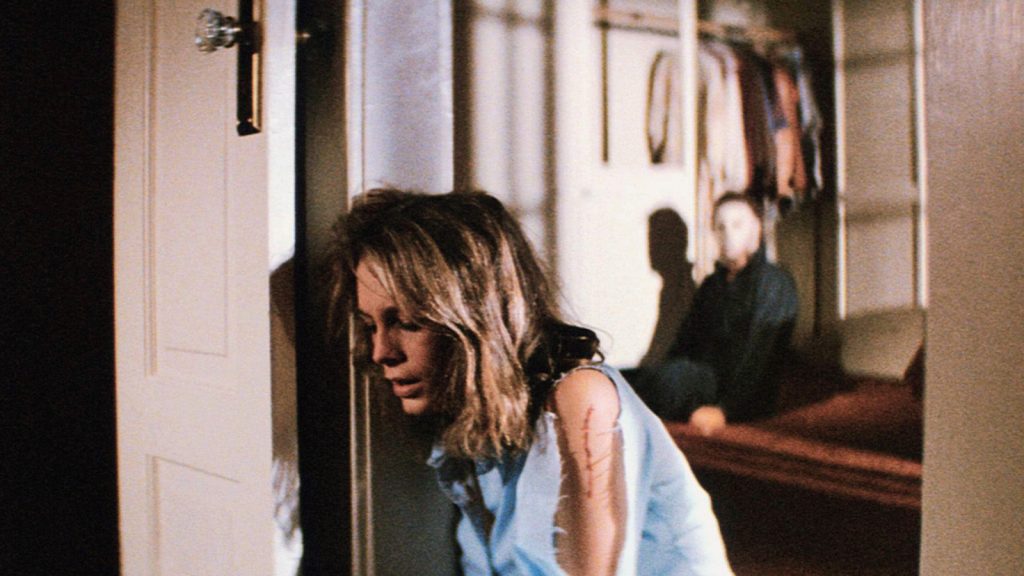
In that first entry, we get Michael Myers, Jamie Lee Curtis when she was the belle of the horror-queen ball, and an already-tired-looking Donald Pleasence as the stock Van Helsing–type figure, before he began to appear like he’d been ridden hard and put away wet in 1981’s Halloween II, which was more bathetic than thrilling, but not that bad, all in all. You’d seen worse than the pair, and sometimes that’s enough to make a horror film a decent evening’s entertainment.
We never want to be bored in life, but as a cinematic rule of thumb, we really don’t want to be bored by a horror film. If there is a cardinal error for a work of horror, it’s that. A horror film may be objectively bad and poorly made, but if it’s not boring, it can still be worth our time. Therein is the trick of horror films: Find a way to rivet. Gore can induce longueurs, especially after we become desensitized to it, which pretty much all horror fans were by the early 1980s, and certainly are now. Bloodbaths alone won’t, shall we say, hack it.
Watch Ed Wood’s Plan 9 from Outer Space (1959). The movie has long been derided as one of the worst ever made, but it won’t bore you, and not only because it’s so aggressively—but also winsomely—sloppy. The reason is that Plan 9 is earnest horror, the same way that 1932’s The Mummy is earnest horror. The latter is much more serious in tone and better made, whereas the Wood film is a kid jumping out of a ratty bush to scare us. Don’t underestimate that kid giving you a jolt, though. You remain on the lookout for him each time you pass the bush going forward, never mind that the kid himself has moved on.
Halloween III: Season of the Witch was a bold venture that bucked the tradition of horror sequels and series, and if I had to hand out a ribbon for the most fun of all films that ripen in late October, this would be my choice, and I can’t recommend it enough, though you’ll curse me when the theme music lodges in your head and haunts you the rest of your days.

None of the other Halloween franchise movies are about Halloween save that they occur at Halloween. They don’t channel Halloween. That’s different. Season of the Witch utilizes the strengths and appeal of the holiday against us, which is a novel concept. Carpenter and his co-producer Debra Hill initially had what was a tantalizing vision for the series: each year, a new Halloween film would take a totally different approach than the year before, riffing on our scariest holiday. The movies would in essence be an annual feature-length variant on anthology shows such as The Twilight Zone, Night Gallery, and Thriller. Why someone else hasn’t executed a version of this concept in big-screen form, I’m not sure.
The Halloween team stopped after their lone 1982 entry, which forgoes the presence of Michael Myers, because it didn’t fare as well at the box office as its two predecessors, revolving as they did around the big lug. As a result, Season of the Witch—as its fans refer to it—is a perfect cinematic analogue of the idea that we only have one life to live. Is that true? People say as much with total certainty, and I always want to ask them how they know. Season of the Witch looked like it was going to be a one-and-done project, and it was, in a way; in another, it’s had a second life of its own as a movie with a ghost that keeps hanging around.
Carpenter and Hill were leading with class for their would-be first entry for their Washington Irving–style sketchbook of films, having hired British sci-fi maestro Nigel Kneale—author of the acclaimed and excellent Quatermass series—to write the script. Kneale did just that, with a tale of mind possession and witchery, which was deemed too subtle. In other words, this was thinking-person’s horror, Kneale’s specialty. Rewrites were made, Kneale found them embarrassing and said, “No, sir, I’m out!” He requested that his name be removed from the project, and without his guidance or input or any heed being paid to his objections, we instead descended into the world of terror-camp, which is not the same as terror camp. The latter would be the likes of our friend Friday the 13th, whereas the former is plucky horror with a toothy rictus worthy of Conrad Veidt in The Man Who Laughs—a grin displayed just prior to that charnel-house mouth opening to take a bite into your side.
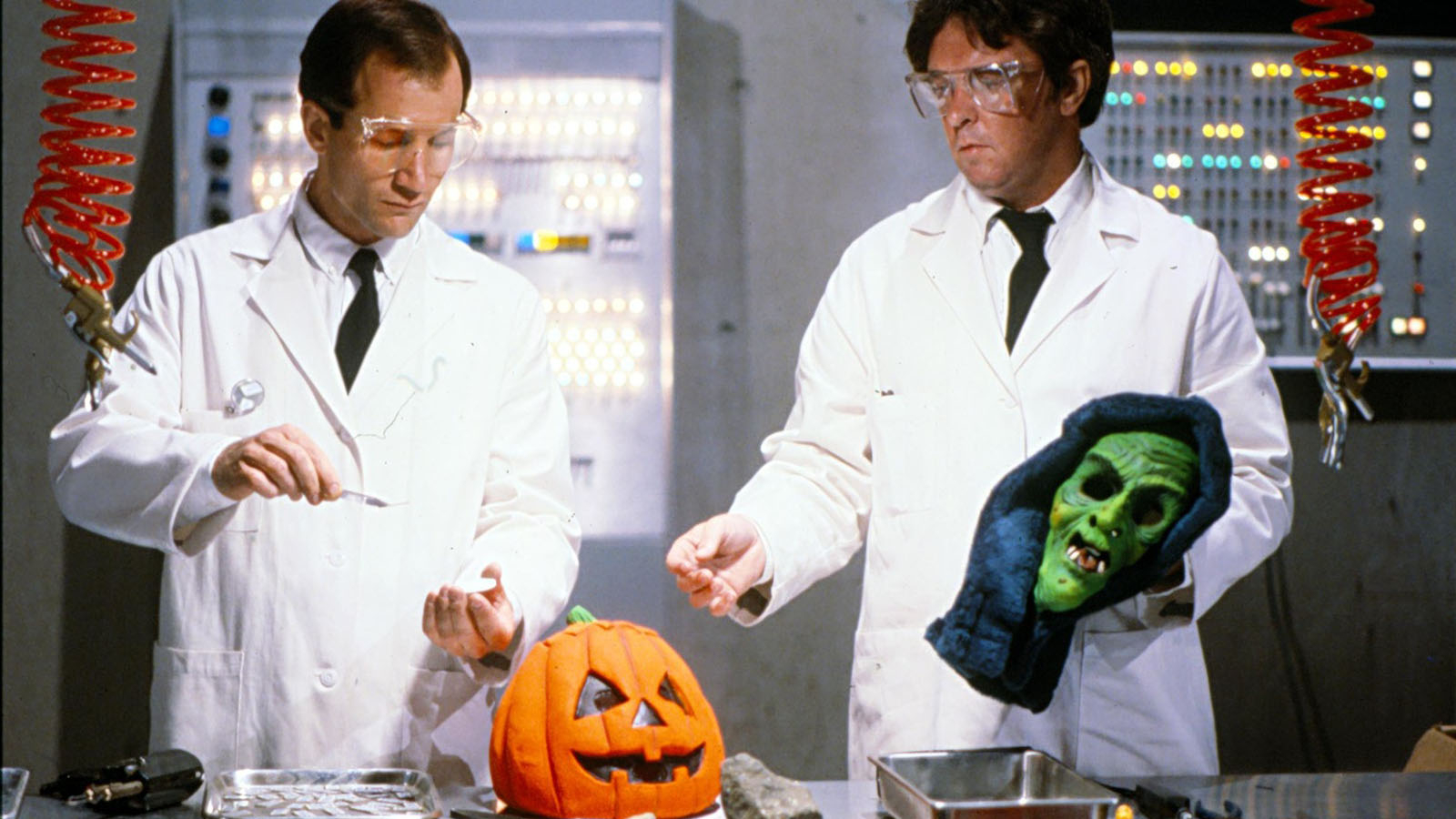
The plot of Season of the Witch flouts the concept of saying, “There’s this movie and it’s about X, Y, and Z,” but we can try. It features a mad-scientist type who chipped off a piece of rock at Stonehenge, and now he has a robot army at the Silver Shamrock factory where Halloween masks are made, and it is with these masks—and the most irksome, “You are working my last nerve”–type of commercial in history—that he’s going to take over the world. Or something. It’s hard to know. Bring back dead people who were sacrificed in England. Outer space is also involved, because why not? You dump out your Halloween candy after the big night, and there’s always a random treat—a Cadbury Egg left over from Easter or some such. The intergalactic angle is this movie’s version of that. You’ll eat it anyway, so to speak.
But guess what you won’t find any of in Season of the Witch? That’s correct, witches. Some movies make you inwardly exclaim, “Huh, go figure.” Season of the Witch is one of them. As these things usually work, a man and a woman will attempt to thwart the mad scientist. The man is a heavy drinker whose marriage is failing, and she suspects her dad was murdered by supernatural agents, or at least very shadowy types. They team up, just like it feels we’re doing with the movie itself.
The people who love Season of the Witch do so as one loves a cult film. No one “kind of” likes a cult film. They love it, or it’s not a movie with which they bother. Season of the Witch stokes passions. There are films by Bergman or Antonioni that don’t in the slightest. Are they better? I guess. Depends what you’re looking for. I would suggest, though, that a movie’s utility exists in proportion to how much it rouses you, and on that score, Season of the Witch may be a seasonal classic, albeit with a suitable amount of winking and nudging to get you to go along. But it’s not long before we—or some of us—are nudging and winking right back.
The first time I saw the movie was as an adult at the Brattle, a popular art-house cinema in the Boston area. Smart programming, smart films—but this was a film that was smart because of its own awareness of what it was. It’s cheeky and weird and insistent, all good qualities for a Halloween film to have. The Blob from 1958 has a similar “personality” as a movie, and what was treated as a disappointment at the time in Season of the Witch—critics hadn’t a clue as to the point—has aged better than anything pertaining to Michael Myers. He’s cumbersome and once we’ve seen him coming that first time or two, we’ve seen him coming all of the rest of the times. Does Michael Myers ever really surprise you? Whereas nothing preps you for Season of the Witch.

Tommy Lee Wallace directed, and we get bits of the original Halloween score in fugato-fashion—that reductive, follow-you-around synth pattern—and while Wallace was well-suited to the material—he’s clearly all in on the romp—I can imagine the anger people would have felt at the time going to the movies and discovering this meta concoction. You wouldn’t go to a Dracula film without Dracula, right? Not knowingly. And if you went expecting to see Dracula and didn’t, you’re apt to think yourself ripped off. Michael Myers had become the franchise, which makes this massive shift all the ballsier, if also set up to fail at the time because of blindsided expectations. The reason, though, that Season of the Witch lives on is because it taps directly into the vein of what Halloween the holiday is most about: the costume you will wear, the anticipation, the short days, classic monsters on the television, the telling of ghost stories, and, as we get older, our memories of nights of tricks and treats.
Never underestimate what it means to get your costume just right. A silly thing, yes, but it counts for a lot. We feel better knowing we got the blood on our plastic fangs perfect. Who else will notice? Probably no one, unless we tell them, which is okay. There’s a strange amount of joy and hope and personal satisfaction involved in Halloween. A licking of sharpened chops for the big day, and a sadness when it passes.
Luckily, November has its own spooky vibe, but much of that has to do with how the Halloween season spirits us into the penultimate month of the year, with carved pumpkins still in evidence, and the last of the leaves finally giving themselves over to death. There will be ghosts again at Christmas, but would there be if Halloween hadn’t already gotten matters started? Death usually terrifies us, but there’s this one time of the year when we make a form of peace with it. The living and the dead commingle—call a truce, in essence, though the dead, of course, are far less troubled by us, I suspect, than we are by them.
Halloween is much like Christmas, in that when you’re a kid, you count down the hours to the big day. In Season of the Witch, that countdown is epitomized by a banshee roundelay of a commercial that’s part of the grand plan to make all of those not-so-cool-after-all masks cement themselves to people’s faces and unleash the unholy horrors of hell. Or Stonehenge. Or the cosmos. The cosmos is involved as well. Let’s call it a cosmic jumble. We’ll be killed by our collective love for Halloween, is the bottom line, though. Now if that wasn’t one of the better brainstorms of a mad scientist, then what is?
So we’re talking sci-fi horror, with camp, and what may or may not be a sociological parable, because a lot of the plot construction—there are robot people instead of pod people—mirrors 1956’s Invasion of the Body Snatchers, and the end is a straight-up rip-off of the conclusion of the earlier film. But you know what? You won’t care, any more than you do why it is, exactly, that your kid’s cheap Halloween candy you keep pilfering tastes as delicious as it does. We’re not talking a box of Godiva, but CVS-bought Halloween fare—a Twix, a Kit Kat, a Reese’s Peanut Butter Cup—on Halloween night or in the days following, positively crushes it.
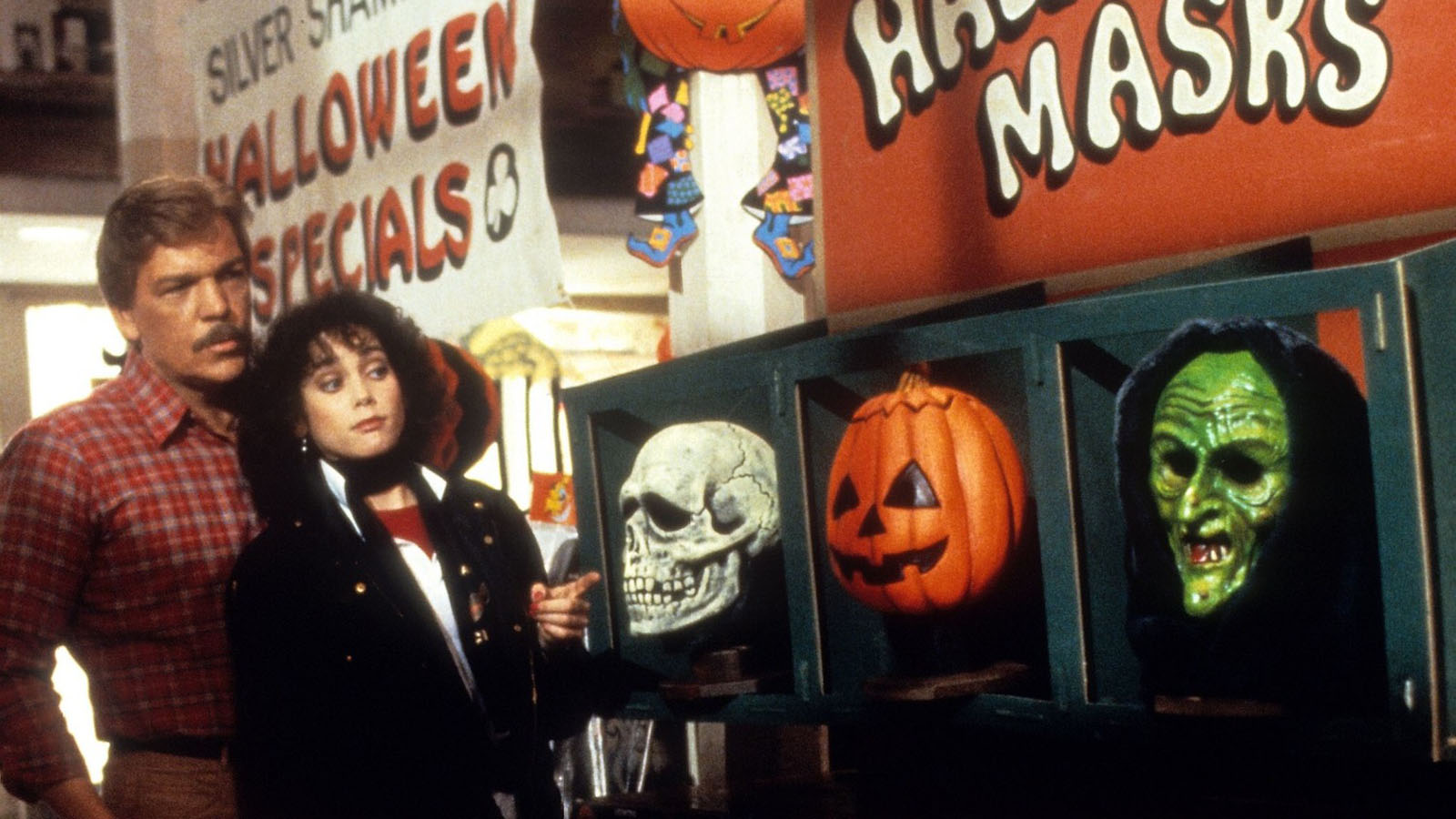
Just as, alas, Season of the Witch was crushed by other horror films that year, such as Poltergeist, which did more than five times better than our weird upstart at the domestic box office. Poltergeist is classy, and Season of the Witch isn’t. Think of the latter as the Halloween form of recess, the letting down of hair, racing around the playground with your little buddies and bragging about how you’re going to have the best costume, which you’re making yourself because that’s way better than any boring fancy costume, and wait until they see.
The monster in Season of the Witch is the love of Halloween itself, with that love being twisted into a force of malediction, and no one being the wiser until it’s too late. All the same: that’s a monster I welcome if I’m to be taken out by a monster, which is what we’re supposed to imagine or envision as we watch a horror film.
I also enjoy reading the old reviews for the movie, in which critics didn’t know what to say, so they suggested that the plotting of Season of the Witch is “dubious,” a generous descriptor. But I ask you this: What is the plot of Halloween the holiday itself? Christmas centers on giving—in theory—but Halloween is more of a mangy free-for-all. Again, it’s that idea of the dead and the living joining forces, but that may take all forms.
You watch Bride of Frankenstein with your very living—and maybe very loud—brood. You read scary stories such as “The Monkey’s Paw,” in which a member of the dead is summoned before being sent back to from where they came. You listen to “Danse Macabre” and feel a desire to shake a shinbone with bogeys. You want in on a prevailing atmosphere, and, yes, a spirit. We can get there in all manner of ways—as many ways as there are different costumes. Costumes we’ve donned, and thousands more we never will.
You can also screen Season of the Witch, as I now do each Halloween season, and sing along to the commercial at its blackened—but fun—heart; a commercial that would cause a ghost seasoned in torment to duck behind the couch and beg for it to stop. It’s the movie version of inhaling nougat while dressed in Ben Cooper garb, so get yourself to the candy feast, or back again. Only make sure to keep your mask off until after. Wouldn’t want to chance it. 🩸
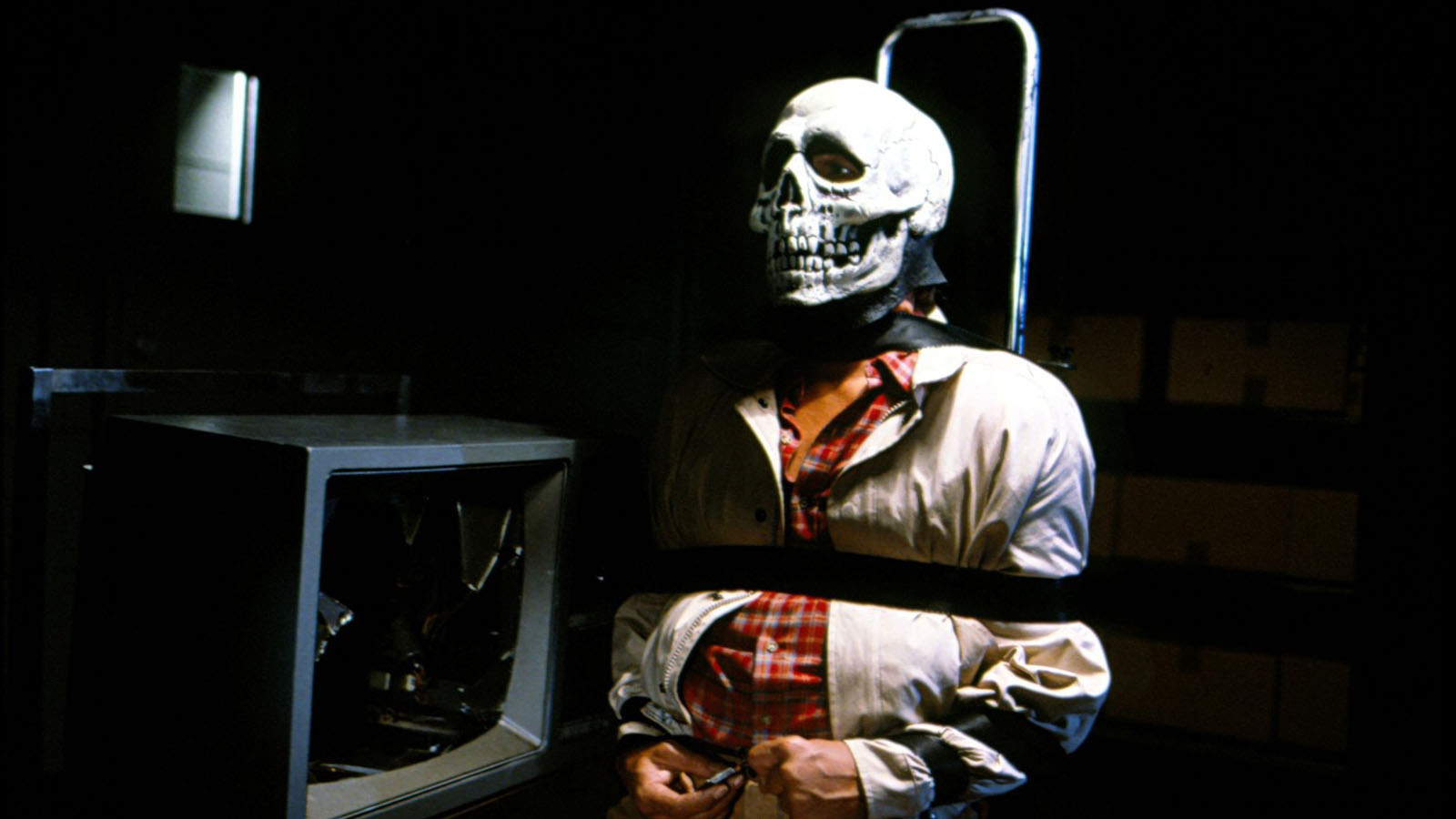
is the author of eight books, including the story collection, If You [ ]: Fabula, Fantasy, F**kery, Hope, a 33 1/3 volume on Sam Cooke’s Live at the Harlem Square Club, 1963, Meatheads Say the Realest Things: A Satirical (Short) Novel of the Last Bro, and a book about 1951’s Scrooge as the ultimate horror film. His work has appeared in Harper’s, The Atlantic, Rolling Stone, The New York Times, Vanity Fair, The Daily Beast, Cineaste, Film Comment, Sight and Sound, JazzTimes, The New Yorker, The Guardian, and many other venues. He’s completing a book called And the Skin Was Gone: Essays on Works of Horror Art. His website is colinfleminglit.com, where he maintains the Many Moments More journal, which, at 2.7 million words and counting as of autumn 2023, is the longest sustained work of literature in history.
Certain horror films have a knack for making viewers ask themselves, “Okay, what are we doing here?” and in this regard, 1983’s Sleepaway Camp is a prime example of the sometimes-edifying effectiveness of the tonal...
BY COLIN FLEMING | June 20, 2025
Anyone can watch a hearse-load of scary movies at Halloween—and lots of us do—but how many of those people try and seek out the films most indebted to, or representative of, the holiday itself?
BY COLIN FLEMING | OCTOBER 15, 2024
In 1983, JoBeth Williams appeared in the ensemble of Lawrence Kasdan’s The Big Chill, thus immortalizing herself as an avatar for white baby boomery.
BY MICHAEL KORESKY | September 30, 2022

This pre-Code offering packs a lot of story into its typically brisk running time, with several plot threads weaving together a (not always successful) tapestry of spooky and criminal doings.
READ MORE >
BY ANN OLSSON | Month 00, 2021
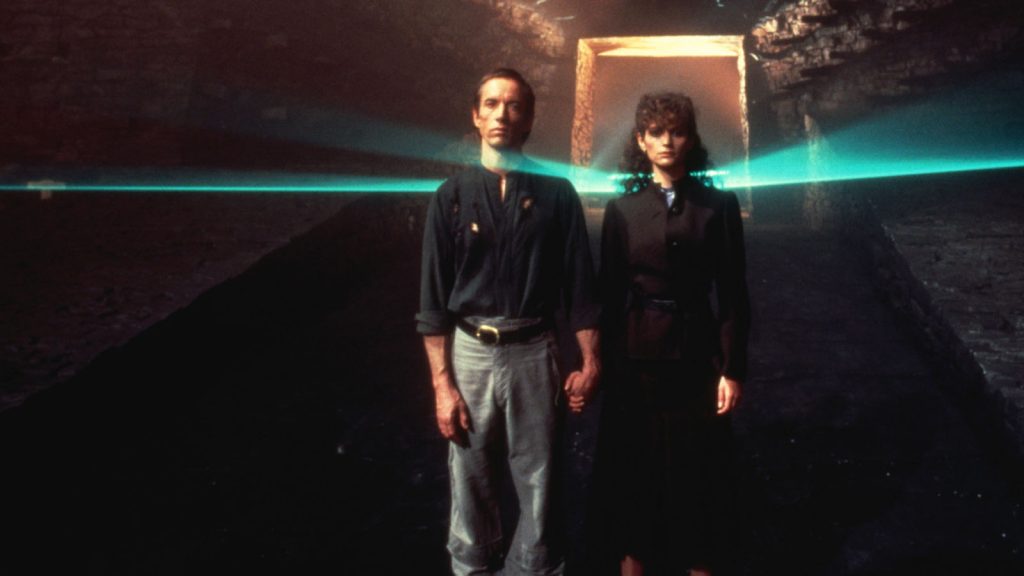
In what could be the fastest-resulting rape revenge movie, a drunken lout brutally forces himself on Ida, the young woman who doesn't return his affections, during a party over Labor Day.
READ MORE >
BY LAURA KERN | Month 00, 2021
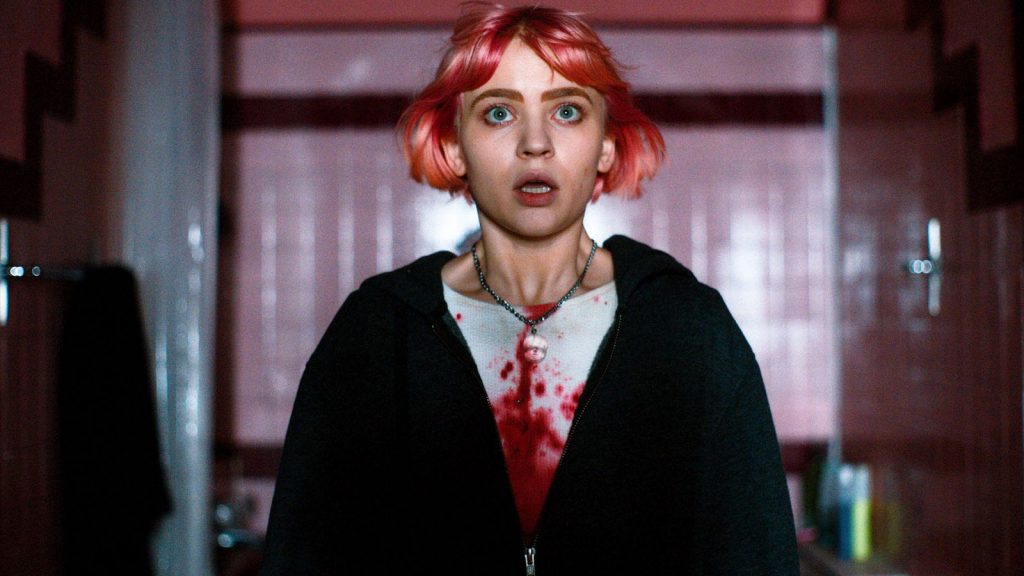
Beast is a lot of movies in one package - fractured fairy tale, belated-coming-of-age story, psychological drama, regional horror film - but above all it's a calling card for its leading lady, Jessie Buckley.
READ MORE >
BY LAURA KERN | Month 00, 2021